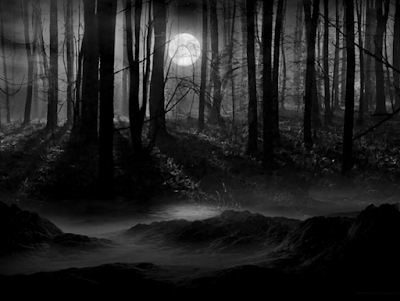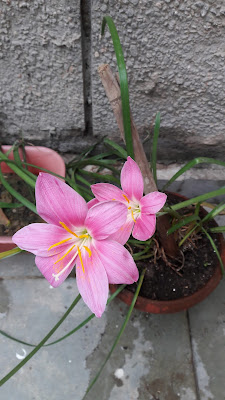The Real Rajasthan: Enigmatic, Daunting yet Enchanting
Rajasthan as we all know is replete with history, royalty, lore of undying love, courage and valor. No wonder it is one of the biggest tourist draws of India, both domestic and international. The Havelis of Shekhawati, the sand dunes of Jaisalmer, and the picturesque Quillas and palaces everywhere keeps the regular tourist transfixed.
But for me "experiential" is the key - word for travel. I like to meet local people, hear their dialects and talk about our small time dreams over chaa, chaye, saa. I have been fortunate to travel the length and the breadth of the country since my childhood and have spent many a summer, winter and autumn breaks in remote villages of India. The lazy days will allow me to amble away at peace without any interference. By virtue of my Father's work the breaks will be in remote locales where he would be problem - solving in some thermal power station or the other of India and names such as Begu Sarai, Patratu, Trichi, Vaizag, Okhai, Singrauli, Anogol, Digboi, Miao were all too familiar. Ever since I was five years old. Fortunately in my line of work too I get to travel, otherwise I would have died of boredom I presume. So as my career unfolded it added to the list of exotic places like Shillong, Leh, Kala Handi, Katihar, Kishanganj, Malda, Azimganj.
They make the land so enigmatic and breathtakingly colourful. Each time I visit the foothills of Aravallis, better known as Rajasthan I am enthralled by the harsh terrain, the difficult water situation and the most striking colours of the desert. The hardships endured by the people are quite the same as one sees in Ladakh, the cold desert of India. The rough terrain, low vegetation, the remoteness of each hamlet in the desert is striking to say the least. I as a city dweller can only salute the sheer endurance level of the people to combat such weather conditions and demanding life style. However, the real beauty of the place always lies in the people, their ways of life and for me the real Rajasthan lies in its villages. No contest there.
 |
| Ker Sangri, black thread beans indigenous to Rajasthan |
The lady of the house smiled with pride and offered me cool water from the pitcher to beat the 47 degrees outside. The shelter was all too welcoming and we spent couple of hours talking through with the women. Pondering how tie and dye work could get them access to more money collectively.
As I stepped out the sight of the ship of the desert brought a wide smile to my face as always. I could not but help click away couple of shots like a silly tourist. I suddenly remembered my last ride on the double humped Bactrian camel on the sand dunes of Nubra last year. The experience was unforgettable for its sheer hilarity. Have always been somewhat weary about the tall Rajasthani counterparts. But quickly I made a note to myself, next time I to befriend one.
Next stop was a village called Dipsar where I met the most interesting Chaachi. The lady had swag and twinkling eyes. An enduring combination for real world heroines. Her laugh lines would put the best of the beauty creams to shame. She argued, heckled regarding non-availability of regular work, reprimanded us yet graciously treated us to chay over a smoke.
Chachi had fascinating array of jewelry on her. Her anklet was put on her as a child bride and ensured slim ankles she shared. True. I suppose for a life time.
Another fascinating person who made my day was Master Block Printer Sedu Ram ji of Bagru village. Although his sons were doing all the new world things, Sedu ram ji keeps on working with vegetables colour alone, keeping the tradition alive. He invited us to his home which doubled up as his workshop too. ushering us in he said with an overcome voice, "but this is how you would have to live if you work with vegetable colours like me, less demand, less work and not a very happy setting", "when poeple do not like what I come up with I end up using them as curtains or something"' he pointed at the shelf behind him.
Sedu Ram's family has been in the business of hand block printing for the last three generations but now things were changing. Youngsters in this community were not only trained block printers but they were graduates, post graduates wanted to do business differently. "We want to do ethical business where each consumer knows what he or she is buying and where from and under what conditions were these products made".
Indian Calico printing history is also set in the British era. Mud resistant mordants were used and vegetable colours for the printing. The earliest versions were hand painted. Today in the age of high demands and high volumes vegetable colours are taking a beating. Young Kuldeep smiled and told me, "Didi your shirt is not azo- free, it is done by rapid technique, the boutique that sold you this for a premium was not honest". This is what they want to change today collectively, building honest, capable and transparent value chains of the future.
I walked out smiling and imagining a future full with possibilities for Kuldeep and his friends who could now draw from the wealth of knowledge about printing from seniors such as Sedu Ram and yet could chart a new future with critical thinking and education. It will be a new day in Bagru soon that was for sure.
The possibility of an ethical businesses writing a new page in the history of Calico hand-block printing was indeed a charming thought to part with.










Comments
and pragya majumder, you should write more often.